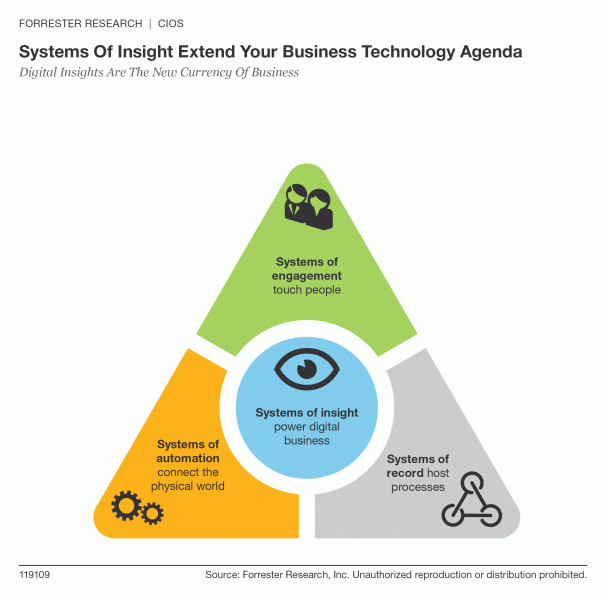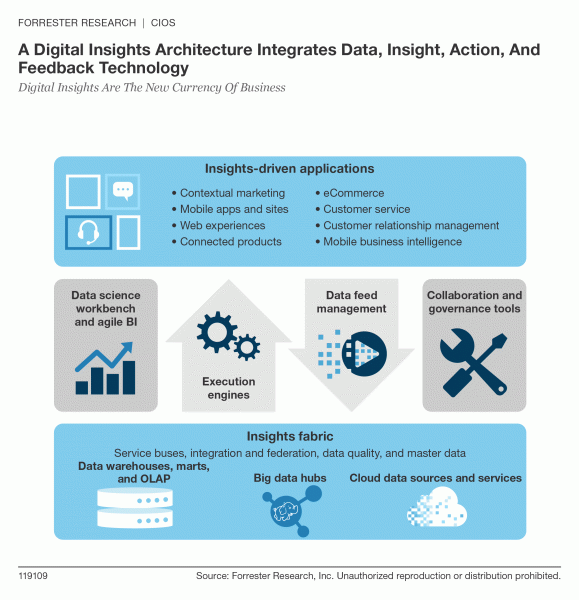Digital Insights Are the New Currency of Business
All the big data technology in the world won't close the gaps between data and action. One global bank told us, "even with all the capabilities and tools in place, we are drowning in data and starving for insight."
To harness the power of all your data to attract and serve customers — to be a digital business — you also need a new way of consistently harnessing insights that matter: insights teams using an insights-to-execution process anchored by a new digital insights architecture. We call this combination of people, process, and technology "systems of insight" (see Figure 1).
Brian Hopkins and I just released a Forrester report called "Digital Insights Are the New Currency of Business" for CIOs. I've never worked harder or longer on a 16-page document: one year, 75 drafts, and help from 25 colleagues spanning business, marketing, data, and technology.
- First, systems of insight use a new operating model that combines business, technology, and data expertise. You will use small insights teams led by business leaders and domain experts working together in both directions: business-to-data and data-to-execution. Only in this way will you focus on data and insights that matter.
- Second, your insights teams will test and implement digital insights where they matter most: in your software systems of engagement, your agile business intelligence tools empowering employees, and in the flow of everyday decisions. Software and developers are key to test and implement digital insights.
- Third, this is a learning system. No longer should you hope an insight leads to action that matters. You will test each insight, reject those that don't help, and collect the new data you generate to improve your insights discovery and implementation. The data you care most about will come into focus instead of being randomly interesting.
- Fourth, you will extend and expand your existing big data and business intelligence investments into a new digital insights architecture with a data science workbench, insights execution and feedback, and a collaborative toolkit. This will take a concerted effort but not a huge budget — we estimate $2-10 million over 2 years.
- Fifth, CIOs won't do this alone. They will work with their CMO colleague to unite budgets, charter insights teams, and find immediate benefits to drive investment.
The payoff of this systematic approach will be more intelligent customer engagement, a direct link between insights investments and business outcomes, and a deepening of your firms' ability to harness the power of insights.
In our research with 35 companies, we found aggressive incumbents like Ford Motor, General Electric (GE), and USAA and digital insurgents like Netflix, LinkedIn, and Shutterstock mastering this new business discipline. We also found 100s of insights-driven startups adding their visualization tools, business services, and machine learning approaches to this new architecture. To learn more, track me down.
Figure 1 Systems of Insight Power Digital Business

Figure 2 Systems Of Insights Drive Business Actions With People, Processes, And Technology

Figure 3 A Digital Insights Architecture Integrates Data, Insight, Action, And Feedback Technology

